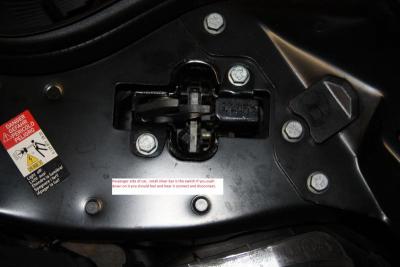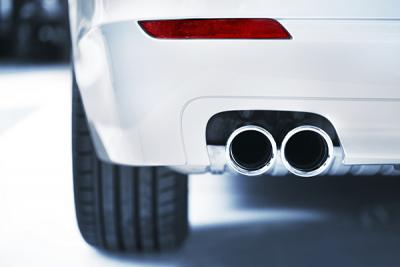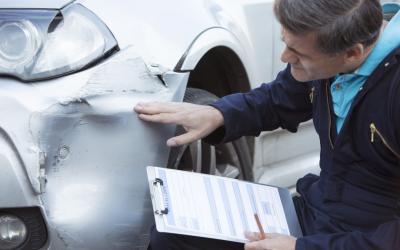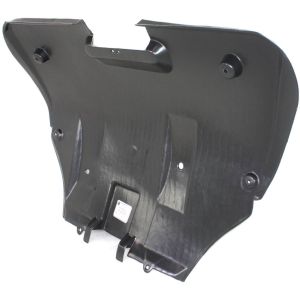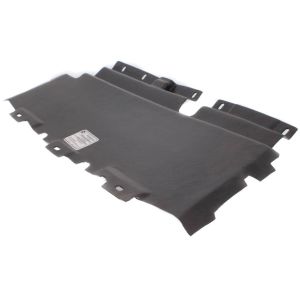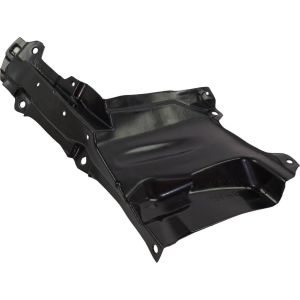Imagine you're a ship captain, and suddenly a mysterious indicator light blinks on your dashboard, your vehicle's version of a storm warning. It's the wrench light, an often misunderstood but important alert that signals trouble in your car's engine or transmission.
But what does it really say about your car's health? And how should you respond to ensure your journey doesn't end in disaster? Let's untangle this mystery together and explore what this ominous little wrench truly means for your ride.
Key Takeaways:
- The wrench light on a car indicates potential engine or transmission problems, requiring immediate attention.
- Ignoring the wrench light can pose safety risks and may lead to further vehicle damage.
- Diagnostic tools are used to read error codes and identify the specific issue causing the wrench light to illuminate.
- Regular maintenance can prevent wrench light issues, and specific maintenance codes help ensure optimal vehicle performance.
What Are the Most Common Maintenance Codes?
Often, you'll encounter two main maintenance minder codes - A and B, which signal the need for specific services or actions. Code A typically calls for an oil change, while Code B demands a thorough inspection and might include oil and filter changes, tire rotation, and checks on crucial components.
To better understand these codes, think of them as your car's language, speaking to you about its needs. They're an integral part of your scheduled maintenance, helping ensure your vehicle's longevity and top performance.
But it doesn't stop at A and B. There are also sub-codes, ranging from 1 to 6, providing more specific instructions. For instance, 1 tells you it's time to rotate those tires, while 3 indicates it's time to replace transmission fluid and transfer case fluid.
Ignoring these codes isn't wise. They're not just lights and numbers - they're messages from your car. By understanding and acting on these maintenance minder codes, you'll prevent minor issues from escalating into major, costly repairs.
Remember, it's not just about addressing problems - it's about preventing them. And that's the essence of effective, scheduled maintenance.

What Does the Wrench Light Mean?
You might be wondering, what does the wrench light mean on your car's dashboard? Simply put, it's a signal that your vehicle has detected a problem with the engine or transmission. But how does it differ from the check engine light?
Let's discuss.
How Is the Wrench Light Different From the Check Engine Light?
While the check engine light signals potential issues in your car's overall system, the wrench light specifically indicates engine or transmission problems.
When you see the wrench light, it's your car's way of telling you something's wrong with the engine or transmission, unlike the check engine light which can be triggered by less severe issues.
The wrench light is generally a sign of a more significant problem that needs immediate attention. It's not something you can ignore, as it could lead to costly repairs or even unsafe driving conditions.
In contrast, the check engine light might come on for minor issues like a loose gas cap. Therefore, understanding the difference between these two lights is crucial for maintaining your vehicle's performance and safety.
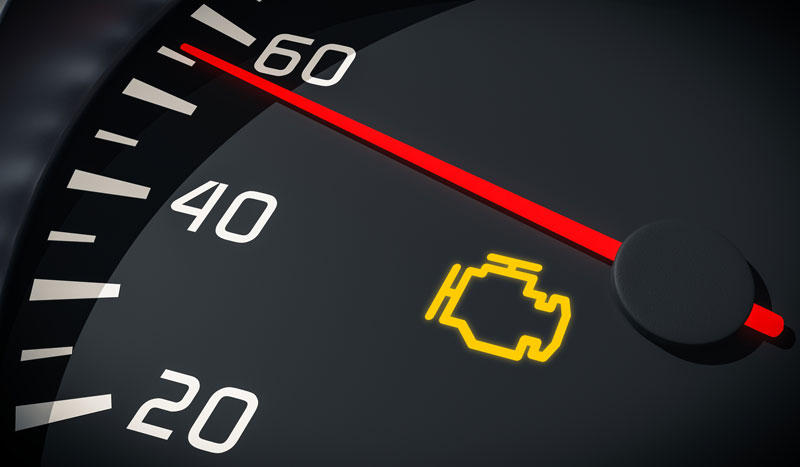
What Are the Most Common Causes for an Illuminated Wrench Light?
You might wonder why the wrench light on your car is lit up. Well, the most common culprits are often an oil change being needed, issues with the transmission system, a faulty electronic throttle body, a bad battery, or even wiring problems. Let's talk about each of these issues and why they trigger the wrench light.
Oil Change Required
One of the most common reasons for your car's wrench light to illuminate is the need for an oil change. This is a vital part of your vehicle's maintenance schedule. Over time, oil becomes dirty and loses its lubricity, which can lead to engine damage if not addressed.
Here are three things you should know about this:
- Frequency: Typically, you should change your oil every 3,000 to 5,000 miles, but it can vary based on your vehicle and driving conditions.
- Importance: Regular oil changes keep your engine running smoothly and can extend its lifespan.
- Ignore at Your Peril: Neglecting oil changes can cause your engine to seize up, leading to costly repairs or even a need for replacement.
Transmission System Issues
When the wrench light glows on your dashboard, it's often a distress signal from your transmission system. This can be due to a variety of transmission issues. The system might be having trouble shifting gears, or the drive belt could be worn or damaged.
The transmission fluid might be low or dirty, causing the gears to grind. If the fluid isn't the issue, the problem might lie in the transmission control module. It's an electronic component that controls your car's gear shifting.
If it malfunctions, it can trigger the wrench light. All these problems can impact your car's performance, and ignoring them can lead to more serious damage. So, when that wrench light comes on, don't shrug it off. It's time to get your car checked out.
Faulty Electronic Throttle Body
Besides transmission issues, a faulty electronic throttle body can also illuminate the wrench light on your car's dashboard. This component controls the amount of air entering your engine, affecting its performance.
Here is what you need to know:
- When the throttle body malfunctions, your vehicle may go into 'limp mode'. This is a safety feature that limits your car's speed to prevent further damage.
- An illuminated wrench warning light could indicate a glitch in this system, causing erratic acceleration or stalling.
- Dirty or clogged throttle body can also trigger the wrench light. Regular cleaning can prevent this issue.
Bad Battery
In the midst of your daily drives, an illuminated wrench light could be signaling a bad battery in your vehicle. This light, also known as a powertrain malfunction indicator light, shines when there's a glitch in the powertrain system.
A failing battery can trigger this light, as it can affect the smooth functioning of the powertrain. You may notice other signs of a dying battery like slow cranking during startup or power fluctuations in your car's electronics.
The car's computer may also store main codes related to battery issues. It's critical to get your battery checked when the wrench light appears, as a bad battery can lead to more serious problems if not addressed promptly.
Wiring Problems
Another potential culprit of an illuminated wrench light could be wiring problems in your vehicle's system. This issue might stem from a loose wiring connection, a common cause of the wrench icon lighting up on your dashboard.
One of the most common wiring problems are the following:
- Loose Wiring Connection: Vibrations from driving can sometimes cause wires to loosen. These loose connections can disrupt the communication within your car's systems, triggering the wrench light.
- Damaged Wires: Over time, wires can become frayed or damaged, negatively impacting their functionality and leading to the illumination of the wrench icon.
- Faulty Electrical Components: A failing sensor or a worn-out switch can also cause wiring issues, which in turn activate the wrench light.
Ensure you get these checked out promptly to avoid debilitating problems down the road.
Is It Safe to Drive With the Wrench Light On?
Driving with the wrench light on isn't just risky—it could potentially cause further damage to your vehicle. The wrench light is a warning sign, indicating that there's an issue with your engine or transmission. This could be anything from low oil pressure to overheating, depending on your particular car model.
If you notice the wrench light while you're driving, it's essential to pull over as soon as it's safe to do so. Ignoring this sign and continuing your journey might lead to costly repairs down the line. Take a moment to check your car's manual. It often provides specific guidance on what the wrench light might signify for your specific model.
Don't hesitate to call a mechanic for their professional opinion. Sometimes, the safest option is to have your vehicle towed to a professional service center for a thorough diagnosis.
Remember, the wrench light is there to help you detect potential problems early. It's not an invitation to test your luck. Safety should always be your primary concern. Make sure your car is in safe operating condition before hitting the road again.
How to Fix It?
Once you've identified that your car's wrench light is on, your next step is to address the issue promptly. Ignoring it can lead to serious damage, but don't panic.
Here's what you need to do:
- Check your vehicle's manual: The manual typically contains information about the wrench light and what it might indicate. It's your first line of defense.
- Diagnose the problem: You can use an OBDII scanner to read the diagnostic trouble codes (DTCs) from your car's computer. These codes will give you an idea of what's wrong. If you don't have a scanner, auto parts stores often provide this service for free.
- Consult with a professional: If the problem is beyond your car maintenance skills, it's time to call a mechanic. They're equipped to handle a wide range of issues your car may be experiencing.
Conclusion
So, the wrench light on your dashboard isn't just a pesky decoration. It's your car's lifeline, alerting you to potential issues - think of it as a silent siren. Don't ignore it; instead, understand its language.
Whether it's a low oil pressure warning or a complex transmission fault, heed its call. Timely maintenance can keep your ride smooth and your wallet happy. After all, it's not just about a car, it's about a journey.
FAQs (Frequently Asked Questions)
What Is the Difference Between the Wrench Light and the Check Engine Light?
- You're asking about the wrench and check engine lights. The wrench light warns of specific maintenance needs or mechanical issues, while the check engine light signals general engine problems. Both require immediate attention to prevent damage.
How Long Can I Drive My Car With the Wrench Light on Before It Becomes a Serious Issue?
- Imagine cruising down the road when suddenly, the wrench light glows on your dashboard. Don't ignore it! This light signals potential engine or transmission problems. It's best if you pull over and call a mechanic immediately.
Does the Wrench Light Always Indicate a Serious Problem or Could It Be a Minor Issue?
- The wrench light doesn't always signal a serious problem. It could be minor, like needing an oil change. However, it's crucial you don't ignore it. Always consult your manual or a mechanic for advice.

